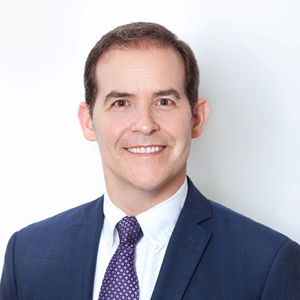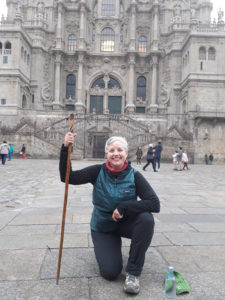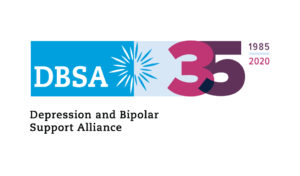35 Years of Peers Impacting Wellness
Taking time to celebrate milestones in our lives exist for many reasons. For some, it’s a chance to celebrate our own accomplishments and reflect on just how far we’ve come. For others, recognizing an anniversary is an opportunity to remember others and their importance in our daily lives.
DBSA is celebrating its 35th anniversary as a nonprofit organization this year, providing hope, help, support and education to people living with mood disorders. Our organization actually started even earlier when two women living with mood disorders, Rose Kurland and Marilyn Weiss, gathered with others experiencing similar conditions in the Chicago suburbs with the support and encouragement of

Dr. Jan Fawcett, Rose’s doctor.
Since that time, DBSA has expanded to more than 500 support groups around the country and offers resources through our programs and website to more than 1 million people each year. DBSA remains the national leader in representing the voice and lived experience of those living with depression and bipolar disorder, and we remain committed to amplifying those voices to reduce stigma, impact change, and serve as a trusted source.
For these and many other reasons, it’s important to recognize this milestone, and to remember not only those who helped get the organization started but also the many individuals involved in helping to advance our mission. We show our appreciation to the volunteers who helped incorporate and lead our local chapters and state organizations, and to those who commit their time to facilitate support groups for peers, family members, and friends. We thank the parents who engage with others seeking resources and support for their child, teen, or young adult living with a mood disorder. We show our gratitude to our scientific advisory board and clinicians of all stripes who recognize the value of peer support and the resources offered by DBSA.
DBSA wouldn’t be successful without important partners, including those of you who give generously each year to help us continue and expand our work. Consider donating in honor of DBSA’s 35th anniversary or to honor someone important in your life. We are grateful to our government, industry, and nonprofit partners who are just as committed to ensuring good health and wellness for our community. And we’re certainly grateful to our board of directors and staff—both past and present—for their dedication and passion.
We invite you to participate in our upcoming 35th anniversary. Look for additional communication in your inbox on activities to honor our milestone in the weeks and months ahead.
Personal and Civil Rights: Privacy of Personal Health Information
Every individual has a right to an expectation of personal ownership of their personal health information (PHI), including the right to decide with whom that information is shared. The Health Insurance Portability and Accountability Act of 1996 (HIPAA) guarantees this right of ownership to the individual.
There is often much confusion around HIPAA rules among clinicians and caregivers, however. HIPAA rules do not, for example, disqualify caregivers from providing medical information about a loved one to a clinician and do not restrict a clinician from accepting and using that information in the treatment of the patient.
But, how are the rights of the individual protected when they are incapacitated and unable to communicate the type of care they want? This incapacitation can also be a hardship for caregivers and family members who may want to be notified of a loved one’s care or be involved in that individual’s care. Consider the results of a DBSA survey on Peers and Caregivers Experiences with the Emergency Department. Thirty-two percent of caregivers responded that they had not been provided the opportunity to share a loved one’s PHI. Only 20% gave the emergency department good marks for keeping them informed about their loved one’s status.
Fortunately, The U.S. legislative and judicial system provides a remedy through a legal instrument called a Psychiatric Advance Directive (PAD). A PAD is a written document created by an individual outlining how they wish to receive care in the event they are not able to communicate with the clinical care team. Further, it can identify those individuals who can be informed, involved, and even have legal authority to make medical decisions if they are incapacitated. Any facility receiving Medicare or Medicaid reimbursement is required to accept a legally executed PAD.
Many states have enacted their own laws supporting the use of PADs and some states have even created registries that enable people to upload the PAD making it accessible to hospitals, treatment centers, and emergency departments. DBSA supports state initiatives that make using PADs more accessible by encouraging DBSA state organizations and chapters to stay informed on the issue in their state and engage in advocacy activities as applicable.
To learn more about this topic, read DBSA’s policy position paper on Personal and Civil Rights: Privacy of Personal Health Information here.
The Peer Perspective Can and Should Shape Clinical Research
Understanding the experiences of peers and caregivers allows development of research studies that address topics that are relevant and important to peers and caregivers.
Interested in sharing your story about wellness, illness, or research?
DBSA is helping to find peers and caregivers to participate in the MyPaTH Story Booth project to learn more about topics that are important to you and improve health and health care. The Story Booth project is creating an archive of peer and caregiver stories, which provide a powerful framework to help doctors and researchers better understand people’s experiences with health, illness, coping, and the healthcare system, and:
- to generate a searchable, categorized archive of patient and caregiver narratives;
- to support health researchers’ use of peer and caregiver narratives in formulating patient-centered research questions;
- to facilitate connections between individuals who have real-world insights and experience with health care or health care delivery and health researchers; and
- to generate partnerships between health researchers and peer/caregiver community groups
Listen to some examples of people who shared their healthcare stories here.
If you would like to participate, you’ll be asked to tell a story pertaining to your experiences (for example, your personal experience with a mood disorder or your interactions with the mental health care system) or your experience providing care for someone else with a mood disorder. Your participation involves one 45-minute session that takes place over the phone. You’ll complete a brief survey prior to the interview, audio-record a 20-minute one-on-one conversation with a conversation helper, and complete a brief survey following the interview. The conversation helper maybe a friend, family member, or research staff member. Prior to the interview, you may want to chat briefly with your conversation helper about what aspects of your story that you are interested in sharing, to help them choose the best questions to ask you. The survey includes questions about your demographic information, health symptoms and also asks about how widely you would like your story shared. Researchers will be able to review this survey data and your story, but you can decide whether you would like your story shared with DBSA or online. No names or other personally identifiable information will be attached to your story.
Narratives have informed projects to improve the quality of care, educate medical students about what it is like to live with a condition, and share successful coping strategies for dealing with a health problem. Insight into the experience of a condition or seeking healthcare could identify quality gaps in healthcare delivery.
You may contact a research staff member by calling (412) 864-3025 or e-mailing mystory@pitt.edu if you have any questions or concerns.
Facebook: MyPaTH Story Booth
Life Unlimited: Natasha Ravnik

My challenges with mental illness began in my early twenties. I was first diagnosed with clinical depression and anxiety from a depressive episode which resulted in a suicide attempt and my first hospitalization. I had another suicide attempt in 2002, with an extended hospitalization.
In 2010, I experienced suicidal ideation for over 6 months after trying over 10 different antidepressant medications. I finally checked myself into the hospital. I was diagnosed with bipolar disorder. My medication regimen changed which brought great relief, though things did not improve right away.
Mental illness has wreaked havoc on every aspect of my life, but I have never given up on myself. I am committed to my wellbeing and recovery.
Living well with a diagnosis takes effort. Managing symptoms is a full-time job: I practice mindfulness daily. I have explored many healing modalities. I eat well, get regular exercise and take my medication as prescribed, as well as Western and Chinese herbal medicine. Years of talk therapy give me greater personal insight. I write, paint, garden and dance to express my creativity.
Depression is a disease of isolation. For years I did not want to talk about my mood disorder. I was afraid to tell employers and people not close to me. I felt ashamed about attempting suicide; I felt irrevocably broken.
Attending local DBSA groups have helped reduce the isolation. Fellow members treat each other with compassion and allay feelings of self-stigma and judgment for having a mental health disorder.
In 2017 I had another depressive episode which forced me to go on disability. I decided to change my life to make living well my priority.
I began training for a pilgrimage walk on the Camino de Santiago de Compostela in Spain for mental health awareness and to talk openly about suicide and its prevention. I chronicled my training walks on a blog. I started a Go Fund Me Campaign called Life is Worth Living –Walk it Well, raising $5,000 to fund the journey.
I prayed for many people on my pilgrimage but dedicated my walk to my DBSA group because they were my biggest supporters.
In October 2018 I left for Spain. I walked 303 miles from Burgos to Santiago de Compostela. It was incredibly challenging, but the best thing I have ever done for mind, body and soul. I did not let my disability stop me from achieving my goal.
My path to wellness has been long and recovery is ongoing. I have to accept that my diagnosis is lifelong. It’s not going away. I am relatively high functioning but sometimes still get really depressed. Those times are hard. But I am constantly learning new coping skills to manage my disorder.
Life is Worth Living is my motto. I strive to live well—having a full, creative and fun life—to the best of my ability, one day at a time. When I accept my mental limitations, ask for and receive help, my life is truly unlimited.
Ask the Doc
Supporting Youth Mental Health: Teens and Screens
When you google ‘mental health and screen time,’ 307 million hits are generated. It is fair to say we are in a significant conversation around new technology and its impact on mental health. This conversation is especially prevalent when we talk about youth mental health. Technology has been an integral part in the lives of Millennials, and Generation Z has not known a time when technology wasn’t prevalent. It is easy to understand why we might correlate concerns about youth mental health and screen time.
But how verified is our instinct that screen time may be eroding youth mental health? Surprisingly, the evidence found so far has had little clinical significance. Published in January 2020, The Journal of Child Psychology and Psychiatry released a comprehensive review of recent studies around this topic.
“The most recent and rigorous large-scale preregistered studies report small associations between the amount of daily digital technology usages and adolescents’ well-being that do not offer a way of distinguishing cause from effect and, as estimated, are unlikely to be of clinical or practical significance.”
Further research needs to be done to fully grasp how screen time impacts the lives of young people because ultimately, not all screen time is created equal. The study pointed to all of the positive supports and communities that can be found online and that young people may use screens to find resources and feel better connected to others. What can be discerned is a need to be mindful about screen use.
Finding a balance around technology use can be difficult within the family unit. It is very easy for parents and caregivers to fall into a blaming narrative around phone use. Engaging in a holistic conversation around phone use may be more helpful. As you consider your young person’s screen use, consider your own as well.
Questions to Consider:
- Does the amount of time I spend in front of my screen reflect my values?
- Does my time spent on screens make it harder for me to connect with people in my real life?
- Does the content I view online make me feel good about myself or inadequate?
- Does my screen provide helpful tools for me or my loved one’s mental health condition?
- Does my screen time interfere with my sleep?
By being mindful about screen use, we can better understand its relationship to our mental health or the mental health of younger people in our lives. Despite research being inconclusive in this area, we can take steps to improving our relationships with screens by defining our own values around technology use.
Ask a Young Adult Q&A
Members of the DBSA Young Adult Council offer their perspectives on questions posed by young adults about living with a mood disorder.
Question: Lately, I’ve been feeling really overwhelmed. What are some tools I can use to help?
Answer: Overwhelming feelings can be tough to manage, whether it’s anxiety, depression, and all the things that come with it. Something I keep in my tool belt is a grounding kit! I have some form of it no matter where I am.
But first, what is grounding? Grounding is a way of bringing yourself into the moment, by focusing on yourself and your surrounding area, not the thoughts racing through your mind.
When working on grounding yourself, you want to focus on your senses. My kit, which is easy to make and customize, has something for each sense.
Let’s start with sight. If you are creating a physical kit, try printing out some images that make you happy. Pictures of a place you love, your best friend, a sunset, your pet. Write down some inspirational quotes that bring you comfort. A mobile/web option is creating a collection on Instagram of pictures that make you happy or even a Pinterest board! Even as simple as changing your phone background to something positive can make you smile.
Let’s move to sound. This can be a little tricky but there are options. Pop a pair of earphones into your kit. That way you can pop in some tunes and focus on the music. Audiobooks are great choices too! Want something even more chill? Try a guided meditation. On your device, you can make a playlist full of songs that soothe and relax. Or if you prefer, find someone else’s. You can also find apps that play relaxing sounds, like rain, waves, or nature. If you are unable to listen to anything on a device, try humming or speaking to yourself. Remind yourself of your worth, your strength, your resilience. You can also focus on the sounds of your breath, the sound of the fan as it breathes new life into a room. There is sound all around us, and thankfully it’s very easy to create when need be.
Next up to the plate is taste. I personally like to keep something on me that will satisfy this sense. Easy to carry things include gum, hard candies, Breath mint strips, or small chocolates. Pick a flavor you enjoy and savor the item when you eat it. Focus on how it feels in your mouth, the different flavor notes; take it all in. If you don’t have anything on hand, I find even watching food videos online can help!
Smell is a fun one. If you’re out and about, take some deep breaths and focus on the smells around you. Perhaps you smell the coffee someone has next to you. Maybe it’s freshly cut grass, the scent wafting through the windows. If you want to have some control over your scent, there are ways to accomplish that. Try filling a sachet with coffee beans or lavender. Carry a candle wax melt and sniff when needed. If you’re home, have a candle or incense that makes you feel good.
Last but not least we have touch! In my kit, I have different things depending on what I’m looking for. I have a smooth rock – it’s actually a painted rock I found. But any rock will do. I have a soft piece of fabric I had leftover from a project and I will stroke that when I’m anxious. Don’t have anything handy? Run your hands on your legs or around the hem of your shirt. Feel yourself; remind yourself that you are in the moment. Try feeling the table in front of you, the chair you’re sitting on, the pen in your hand. You are connected to your surroundings.
Some other things you may want to add include phone numbers of trusted loved ones and a safety plan in case you remain overwhelmed. It’s always okay to reach out if you are unable to cope alone.
Grounding is an efficient way of dealing with intrusive thoughts. Different things work for different individuals, so it may take a while to find your perfect combination. Grounding is the perfect addition to any mental health warriors toolbox!
Answered by NaKeisha
BP Magazine: The History of Bipolar: Through the Ages—It’s Been There
Medical science in the digital age continues to move forward in search of broader understanding and better treatments to manage bipolar, now with patients as active partners in maintaining their stability.



